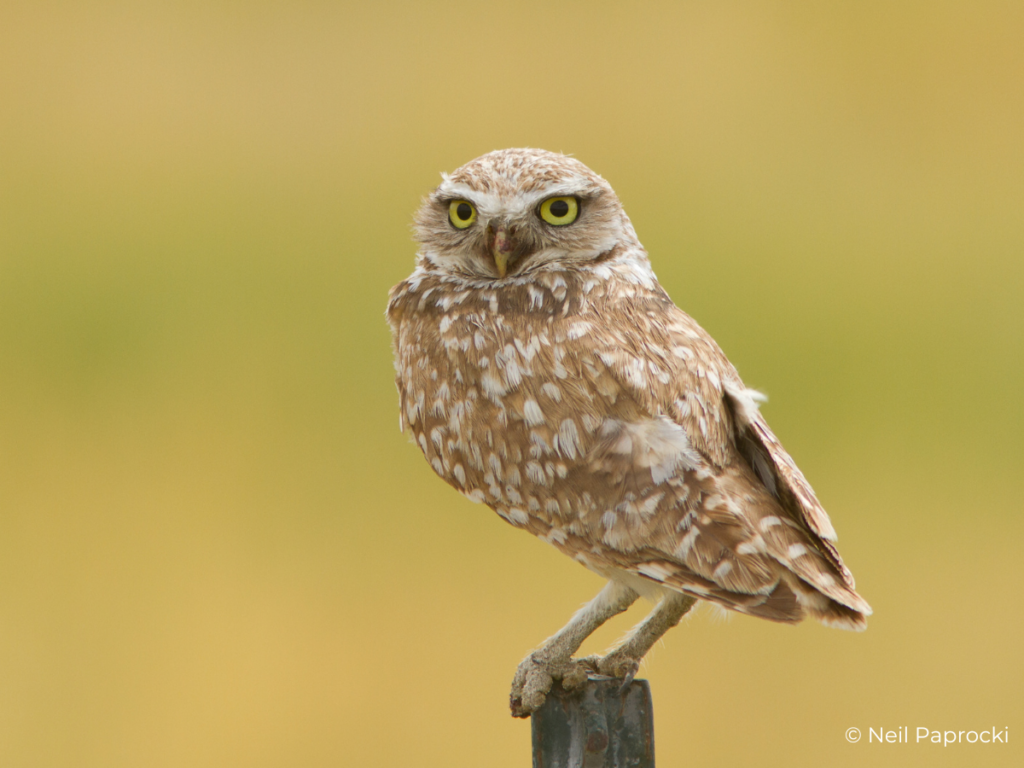Overview
The Burrowing Owl is a small, primarily diurnal owl, unlike most owls that are nocturnal. However, they will migrate during the nighttime and hunt throughout the night, mainly catching mice as opposed to primarily insects during the day. They are found in dry, open desert grasslands (often where prairie dog towns are), sage deserts, and sandy grasslands. The most unique aspect of the Burrowing Owl is that they nest in burrows in the ground (hence their name). Although they are capable of digging burrows and do so when needed, they often use already-dug burrows of prairie dogs, skunks, and other digging animals. Burrowing Owls eat mainly insects that they find on the ground but will catch lizards, some birds, and other small animals when the opportunity arises. They often place mammal dung around their burrows that attracts dung beetles, which the Burrowing Owl then feeds on. Their regurgitated pellets are often made up of beetle exoskeletons. They hunt mostly on foot and are fast runners when chasing prey. Burrowing Owls are widespread and fairly common throughout the Western half of the US (including southern Canada) and South America. They also reside in the Florida peninsula and the islands due south (see map). In some areas, the Burrowing Owl is declining in numbers and is quite rare. When mating, they make a series of sharp “he heear” calls; they make a fast chittering call year-round. Nestlings and fledglings give a raspy single note when begging.




